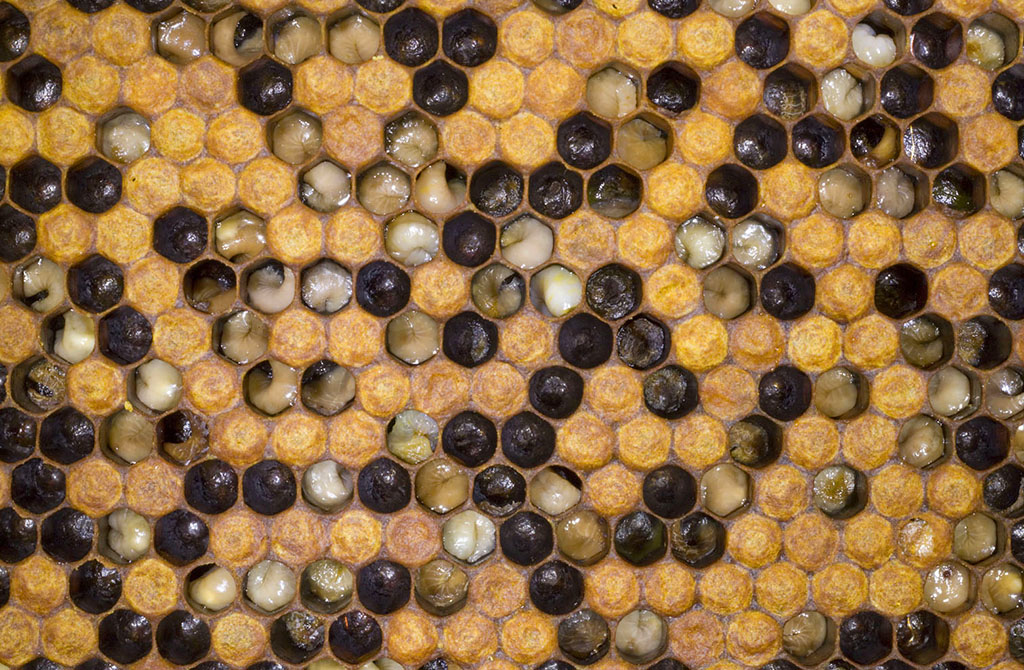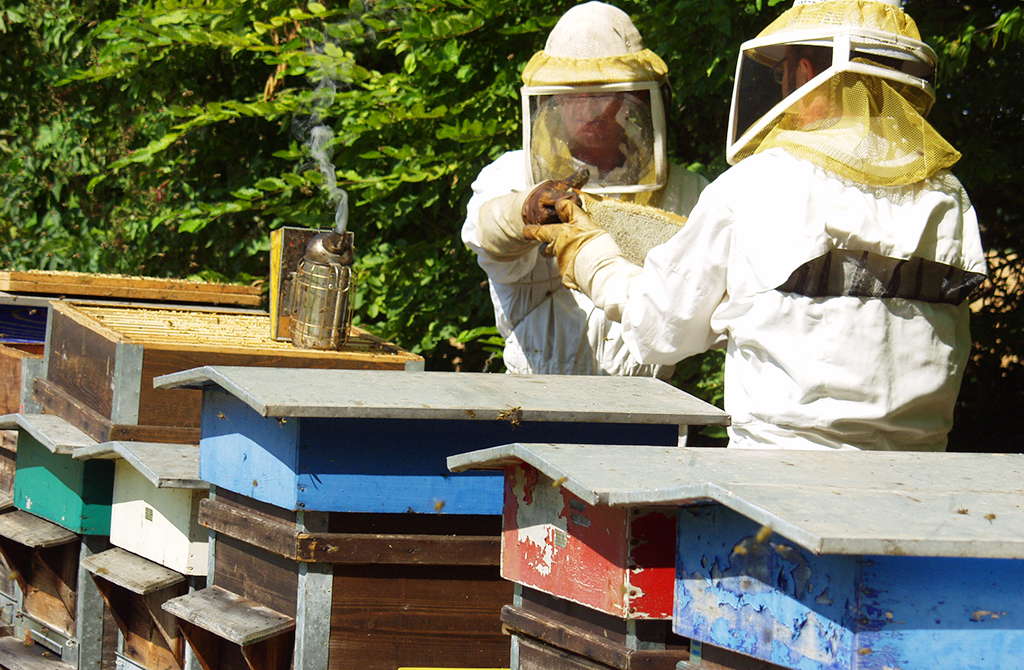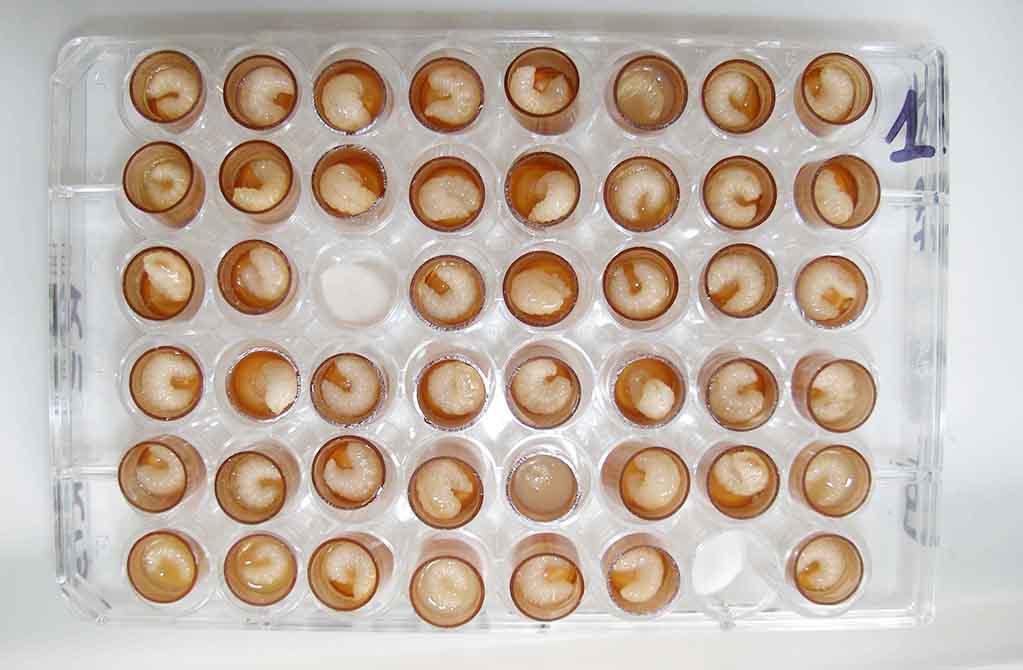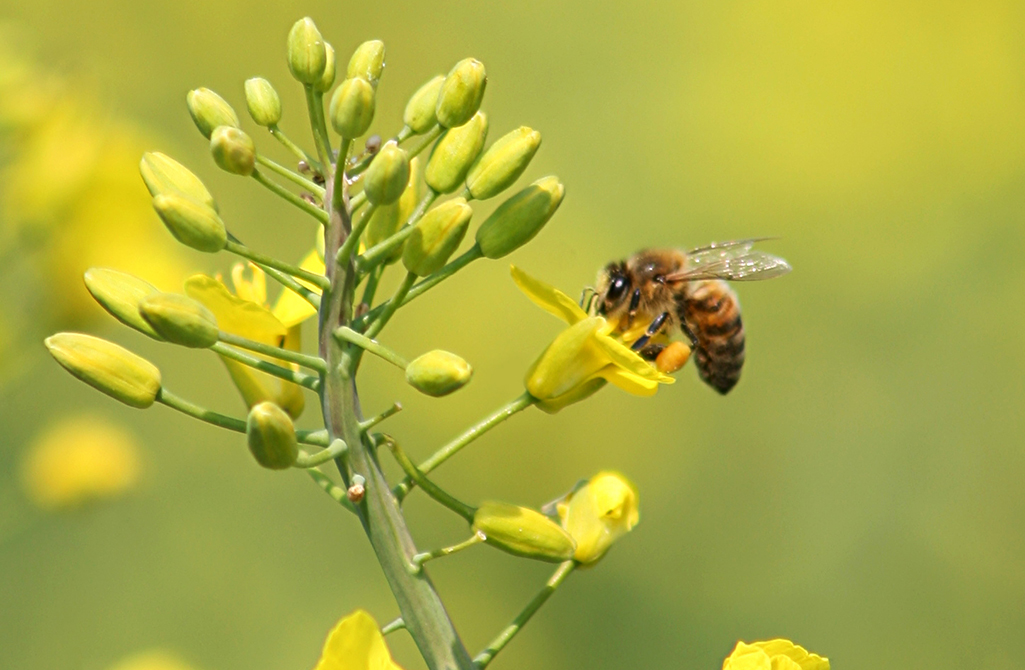Around 180,000 bee colonies are registered in Switzerland, each consisting of tens of thousands of individual bees. These colonies not only produce honey, beeswax and pollen, but also perform the essential service of pollinating agricultural crops. Often, however, the keeping of bees in high densities leads to problems with diseases such as European foulbrood (EFB), which threatens Swiss bee stocks. Agroscope’s Centre for Bee Research aims at a better understanding of this disease, as well as the development of strategies to control it. One focus lies on the genetics of queen bees.
European foulbrood is caused by the bacterium Melissococcus plutonius. The pathogen enters the digestive tract of young honeybee larvae through food, where it then competes with the larvae for nutrients. Frequently, this initial infection results in further infections with secondary pathogens. Diseased larvae then turn yellow-brownish, decompose into a slimy mass and emit a sour odour. The pathogen M. plutonius also resides in adult bees without causing disease symptoms. Although it has been detected in beeswax, pollen and honey, it poses no danger to humans.
Can lead to colony collapse
In the colony, nurse bees are responsible for raising the brood. They regularly inspect larvae and feed them with a secretion from their hypopharyngeal glands mixed with honey and pollen. They also share the food among all larvae of the colony. This sharing of the food combined with constant temperature and humidity conditions favours the spread of microorganisms – including M. plutonius – within the hive.
The spread of the pathogen within the hive can lead to massive losses of bee brood, and even to the collapse of whole colonies. Diseased and weakened colonies are often robbed of their honey and pollen stores by forager bees of stronger colonies, which are then in turn contaminated, transporting M. plutonius into their own healthy colonies.
Notifiable disease
In Switzerland, European foulbrood is a notifiable disease, and measures for preventing its further spread are governed by the Animal Disease Ordinance (TSV). An outbreak requires the inspection of all colonies of the affected apiary by the regional bee inspectorate. Infected colonies must be destroyed, and contaminated bee material either disinfected or destroyed. In addition, a containment zone of two kilometres in diameter must be established around the affected apiary, within which all apiaries are inspected for further cases of EFB. Although these measures hamper the further spread of the pathogen and help minimise damage, our current lack of understanding of the disease means that a more holistic solution to the problem is not yet available.
Common in the Bern region
It is not known why European foulbrood is so common in Switzerland – particularly in and around the canton of Bern – despite being fairly rare in neighbouring countries. In addition to the region’s high density of apiaries and different beekeeping practices, researchers suspect that the genetic diversity of the pathogen may be responsible for the local high prevalence of the disease. The analysis of Swiss M. plutonius isolates has revealed the presence of at least thirteen genetically different types of the bacterium in Switzerland.
Genetic differences in isolates of the same bacterial species can accelerate growth, reduce the requirements for growth, or even affect the virulence of pathogens. Agroscope researchers tested the virulence of several M. plutonius isolates in artificial-infection assays in the laboratory, discovering that some isolates caused significantly higher mortality rates in honeybee larvae than others.
Potential tolerance in bees
In apiaries with an acute outbreak of European foulbrood, bee colonies without symptoms are often found side-by-side with diseased colonies; the former are possibly tolerant to the disease. Similarly to the virulence of the pathogen, the tolerance of the bees to the disease could be genetically determined and passed on from the queen bee – the mother of the entire colony – to her offspring. Artificial infection assays of brood of both symptomless and diseased colonies have clearly demonstrated the existence of differences in survival rates among the two groups.
These assays are still ongoing, and we have yet to learn whether the differences observed are actually genetic in origin. Agroscope’s Centre for Bee Research is therefore pursuing a breeding programme that is meant to help reveal the genetic component of European foulbrood tolerance in honeybees as a basis for future selection for tolerance to this damaging disease.









